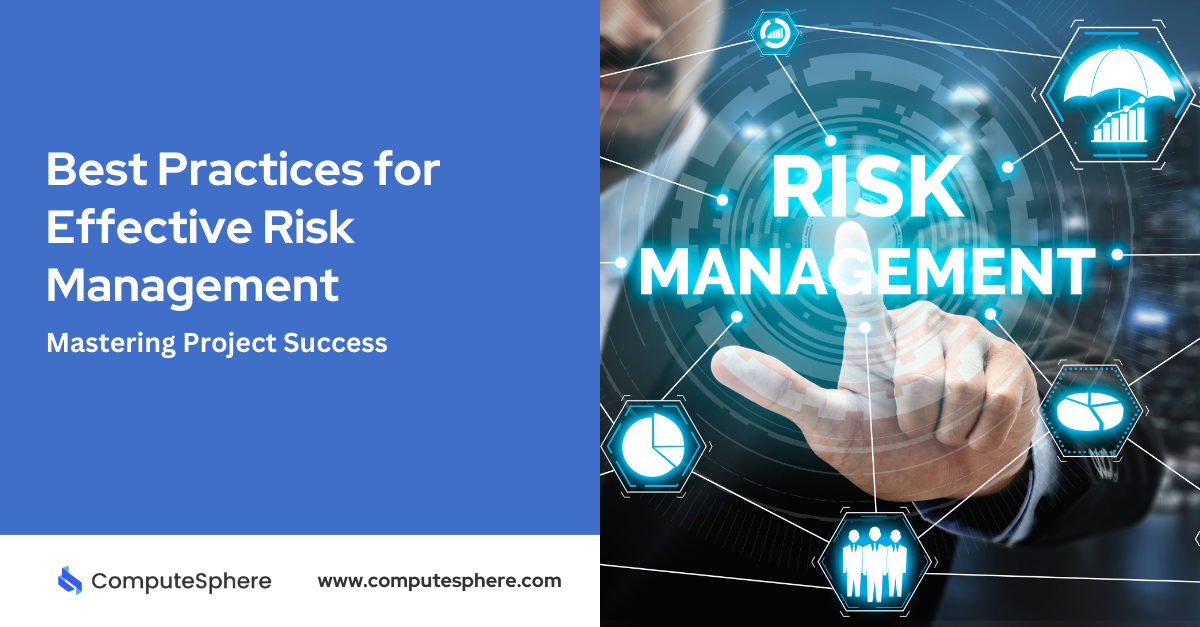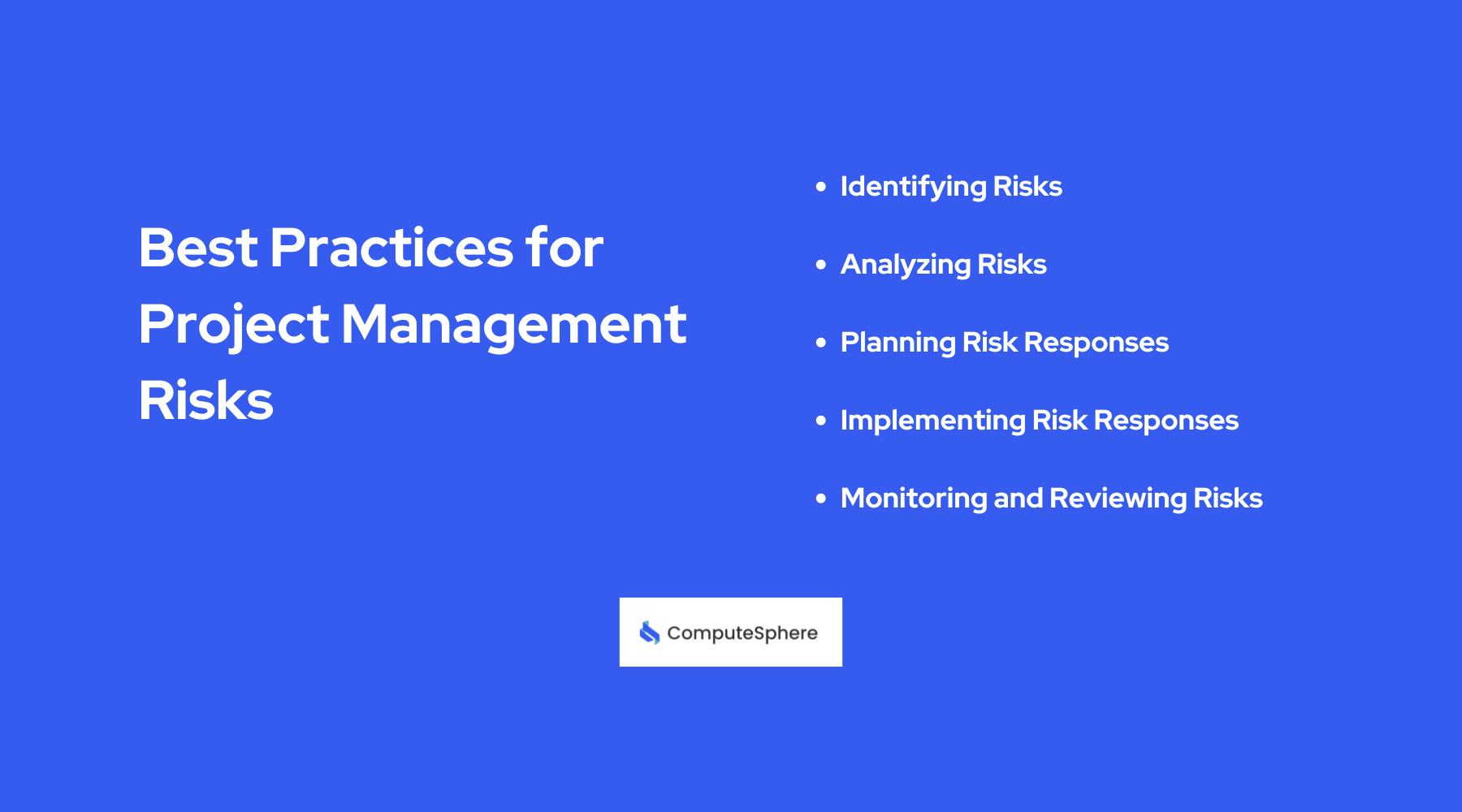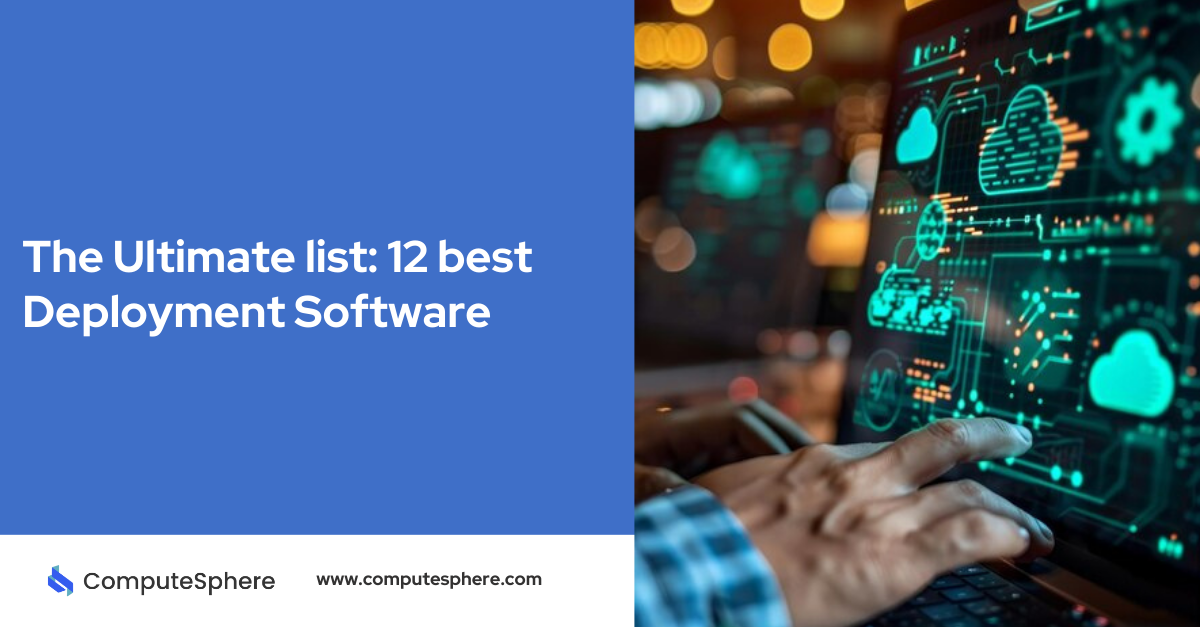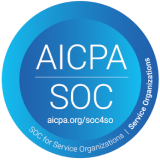Mastering Project Success: Best Practices for Effective Risk Management

Project risk management, a systematic process of identifying, analyzing, and responding to risks, plays an important role in ensuring the success of any project. Effective risk management not only helps prevent disasters but also improves the chances of your project's success by predicting issues.
In this article you will explore the best practices for managing project risks, offering insights and strategies for project managers to keep their projects on track.
Best Practices for Project Management Risks

Identifying Risks
The first step in effective risk management is identifying potential risks. This process involves a thorough assessment of all aspects of the project to uncover any elements that could pose a threat. One useful approach is to conduct risk assessments, which systematically evaluate various project components for vulnerabilities.
Several tools can help you identify any risk in your project. SWOT analysis (Strengths, Weaknesses, Opportunities, Threats) is particularly effective, providing a structured way to analyze internal and external factors that might impact the project.
Brainstorming sessions with your team members can also generate valuable insights, as different perspectives often highlight risks that might be ignored by individuals. Additionally, checklists based on past project experiences can serve as a handy reference to ensure no common risks are missed.
Additionally, Involving stakeholders in the risk identification process is very important. Stakeholders, including clients, team members, and other interested parties, often have unique insights and concerns that can help identify risks early. Their involvement not only enriches the risk identification process but also fosters a sense of ownership and collaboration, which is important for managing risks effectively.
Analyzing Risks
Once risks are identified, the next step is to analyze them to understand their potential impact and likelihood. This analysis helps prioritize risks, ensuring that the most critical ones are addressed first.
Qualitative risk analysis involves assessing the impact and probability of each risk using subjective judgment. This method is often quicker and can be very effective, especially when time or resources are limited. However, for a more detailed and objective evaluation, quantitative risk analysis is preferred. This involves using numerical data and statistical techniques to estimate the likelihood and potential impact of risks.
Moreover, prioritizing risks is essential for effective risk management. By categorizing risks based on their potential impact and likelihood, project managers can focus their efforts on the most significant threats.
Planning Risk Responses
After identifying and analyzing risks, the next step is to develop strategies to manage them. This involves creating a risk response plan that outlines how each identified risk will be handled.
Several strategies can be employed to respond to risks:
- Avoidance: This involves changing the project plan to eliminate the risk or its impact. For instance, changing the project scope or schedule can help avoid certain risks.
- Mitigation: This strategy aims to reduce the likelihood or impact of the risk. Implementing additional quality checks or backup systems are common mitigation tactics.
- Transfer: This involves shifting the risk to a third party, such as through insurance or outsourcing certain project components.
- Acceptance: Sometimes, risks are unavoidable, and the best approach is to accept them and prepare to deal with their consequences. This strategy often includes emergency planning and allocating reserves to cover potential impacts.
A comprehensive risk response plan not only outlines these strategies but also assigns responsibilities for implementing them. Clear accountability ensures that risk management actions are taken promptly and effectively.
Implementing Risk Responses
Once the risk response plan is in place, you can start taking action. This involves assigning responsibilities, ensuring effective communication, and continuously monitoring and controlling risks throughout the project lifecycle.
Assigning responsibilities to your team to ensure that every risk has an owner who is accountable for managing it. This clarity helps in the timely implementation of risk response actions and prevents risks from falling through the cracks.
Effective communication is vital for successful risk management. Regular updates and discussions about risks and their management should be part of project meetings. This keeps the team informed and engaged, fostering a proactive risk management culture.
Additionally, monitoring and controlling risks is an ongoing process. As the project progresses, new risks may emerge, and existing risks may change in nature or impact. Continuous monitoring helps in identifying these changes early, allowing for timely adjustments to the risk management plan.
Monitoring and Reviewing Risks
Continuous monitoring is essential to keep risks under control. This involves regular risk reviews and audits to ensure that the risk management plan remains relevant and effective.
Regular risk reviews should be integrated into project management processes. These reviews involve reassessing identified risks, evaluating the effectiveness of risk responses, and identifying any new risks that may have arisen. Risk audits, on the other hand, are more formal evaluations conducted periodically to ensure compliance with risk management policies and procedures.
Updating the risk management plan based on these reviews is crucial. As projects evolve, so do the risks associated with them. Keeping the risk management plan current ensures that it remains a useful tool for managing project risks effectively.
Tools and Techniques for Risk Management
Several tools and techniques can improve the effectiveness of risk management efforts. Risk management software provides a centralized platform for tracking risks, analyzing their impact, and managing responses. These tools often include features like risk registers, which document all identified risks, and risk logs, which track the status of risk management activities.
Moreover, nTask and Microsoft projects are valuable tools that help in prioritizing risks. By plotting risks based on their likelihood and impact, these tools provide a clear overview of the risk environment, aiding in decision-making and communication.
Common Challenges in Risk Management
Despite the best efforts, managing project risks can be challenging. One common challenge is overcoming resistance to risk management. Some team members or stakeholders may view risk management as unnecessary or overly pessimistic. To address this, it’s important to communicate the value of risk management clearly and involve everyone in the process.
Dealing with uncertainty and complexity is another challenge. Projects often involve many interrelated factors, making it difficult to predict and manage all potential risks. Breaking down the project into smaller, manageable components and focusing on critical risks can help navigate this complexity.
Additionally, ensuring team buy-in is also crucial. Risk management is most effective when it is a collective effort. Engaging the team in risk identification, analysis, and response planning fosters a sense of ownership and commitment, making it easier to manage risks effectively.
Conclusion
Effective project risk management is an important component of successful project execution. By identifying, analyzing, and responding to risks proactively, project managers can minimize negative impacts and improve the likelihood of project success. Continuous monitoring and regular reviews ensure that risk management efforts remain relevant and effective throughout the project lifecycle. Utilizing appropriate tools and learning from past experiences further strengthens risk management practices. In the dynamic world of project management, mastering the art of risk management is essential for delivering successful projects consistently.
Contents
Built for Builders. Priced for Startups.
Tired of unpredictable cloud bills? ComputeSphere offers modular, fixed-cost cloud hosting that grows with your startup—no DevOps headaches, no surprises.
Get StartedShare this article
Browse Some Related Blogs
Relevant and related contents you can read









